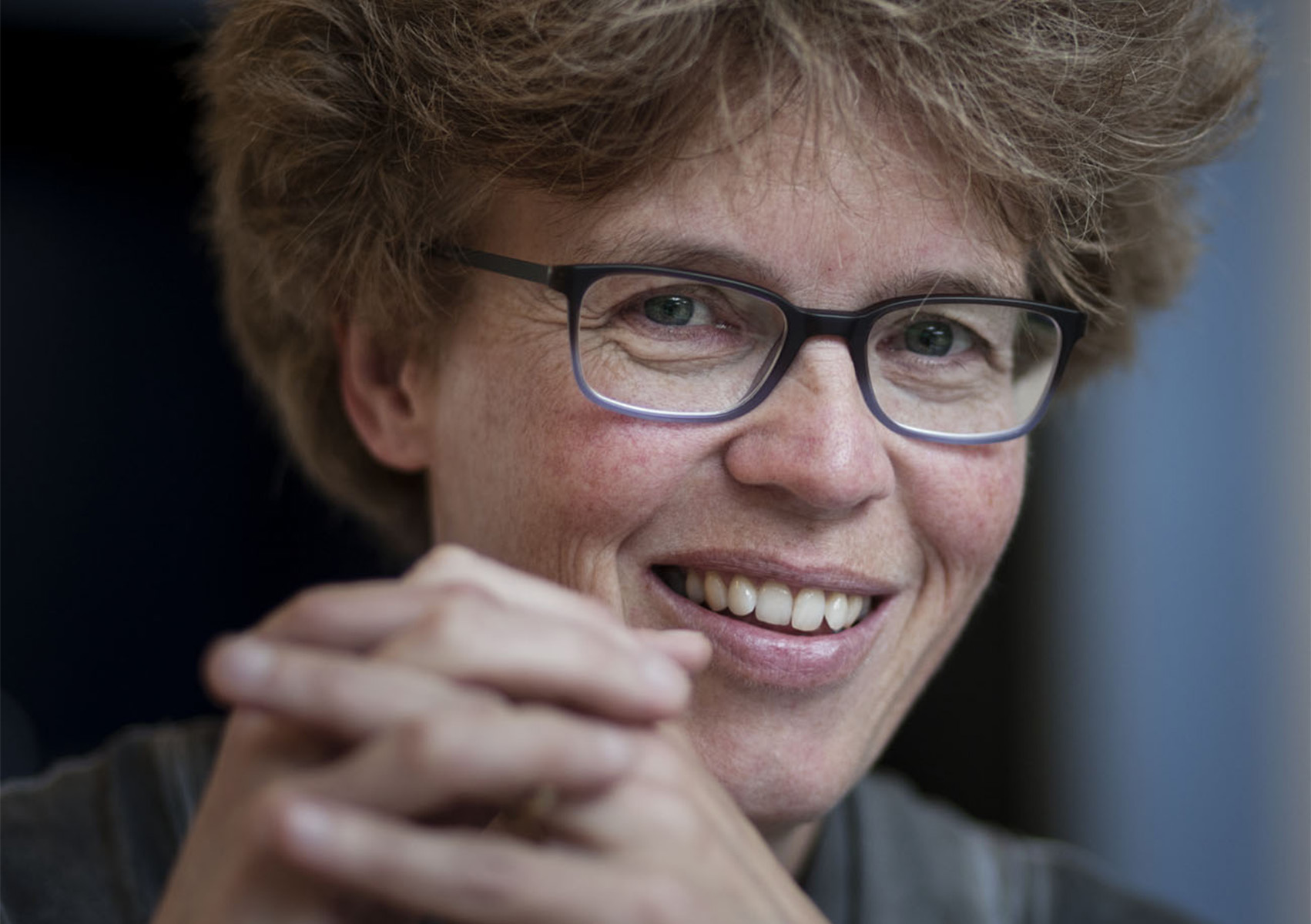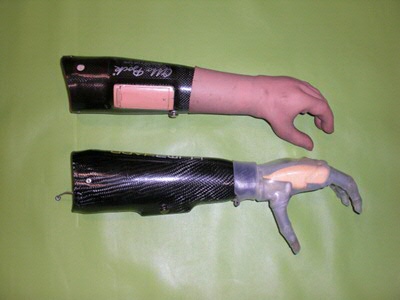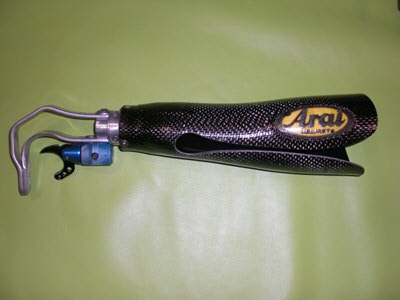Living without an arm

‘The fact that people can still be part of things following an arm or leg amputation, or with another disability – that’s what matters to us as rehabilitation specialists,’ says Corry van der Sluis. She is the only professor of rehabilitation medicine in the Netherlands who specializes in hand and arm protheses. She adds quite pragmatically: ‘And sometimes a hook is simply a better solution than a sophisticated robotic arm.’
Text: Fenneke Colstee, Communication UG
Conducting research, giving lectures and providing patient care – surely that’s more than a full-time job? ‘It certainly is, and you have to change your clothes a lot!’ says Van der Sluis cheerfully, taking off her white coat to reveal a floral blouse as she takes a seat. ‘But that’s also what you choose if you go to work at a teaching hospital. I love doing research, and I love innovation. I enjoy advancing my discipline in this way. And of course, transmitting your knowledge to young people and helping them to become doctors is all part of it.’
Technicians
Van der Sluis studied Medicine in Groningen, became a rehabilitation specialist at the UMCG and has been a professor at the UG since 2011. ‘Our specialization is a follow-up field,’ she explains. ‘Once the trauma surgeon and plastic surgeon have done their work, it is our job to reduce the impairments so that patients can function once more in society. But we don’t do it on our own. In our field, there’s a lot of collaboration with others. For hand and arm protheses, for example, we work with physiotherapists, occupational therapists, psychologists, neurologists and human movement scientists – and of course [her eyes sparkle] technicians.’ What made her decide to specialize in rehabilitation? ‘Biking to school in Friesland, I always went past Lyndenstein, a rehabilitation centre. I was fascinated. It intrigued me how those people managed to cope with their physical disabilities.'

Phantom pain
Advances in her field are occurring at lightning speed. Sometimes it seems like pure science fiction. We now have hand protheses with fingers that can move separately. And the fact that someone can direct their prothesis using the muscles and nerves in their stump is something that Van der Sluis could only have dreamed about as a student. But hand and arm rehabilitation is about more than just prosthetics'. Van der Sluis also deals with other patients with disabilities, perhaps due to rheumatism or paralysis. And recently she has been doing a lot of research on phantom pain. ‘Pain in an amputated limb can be so debilitating! Not sleeping properly, not being able to concentrate on your work or your book, not daring to leave the house.’
Virtual arm
Together with Swedish researchers, Van der Sluis is testing a new method for easing phantom complaints. This involves fixing electrodes to a patient’s stump and linking them to a computer. They can see themselves on a screen, with a virtual arm that moves when they direct it using their own muscles. This requires a good deal of training, but eventually the brain starts to think that the arm is real and that it is no longer necessary to send pain or cramp signals to it. At least, that’s how the researchers think that it works. What actually happens in the brain is being studied in Sweden using MRI scans before and after the treatment programme of 15 two-hour training sessions.
An end to cramp at last
The Swedes are happy with Van der Sluis’ Dutch patients, who are prepared to make two trips to Sweden for the scans. Van der Sluis is also enthusiastic: ‘Thanks to that training, one of our participants now finally wakes up in the morning without cramp in his amputated arm. After twenty years! The treatment doesn’t work for everyone, unfortunately, but it can be a good supplement to other therapies.’ Last autumn, RTL Nieuws broadcast an item about the research. Since then, the hand and wrist centre at the UMCG has had a waiting list of patients with phantom pain.

Hook or robotic hand
It is quite a puzzle to work out which prothesis or treatment is best for whom. In the coming years, Van der Sluis will use a grant of 400,000 euros from NWO to investigate ways to clearly demonstrate the effectiveness and cost-effectiveness of hand protheses. Van der Sluis: ‘Effectiveness doesn’t just depend on the condition, but also on motor aptitude, the motivation to practise, the life that someone leads and the work they do. Sometimes it’s enough to provide someone with a hook on their arm or to attach a fork or typing aid. And a farmer driving a tractor will benefit more from a robust prothesis than a super-sophisticated robotic hand that keeps jamming because of sand or rain.’
More news
-
15 September 2025
Successful visit to the UG by Rector of Institut Teknologi Bandung
